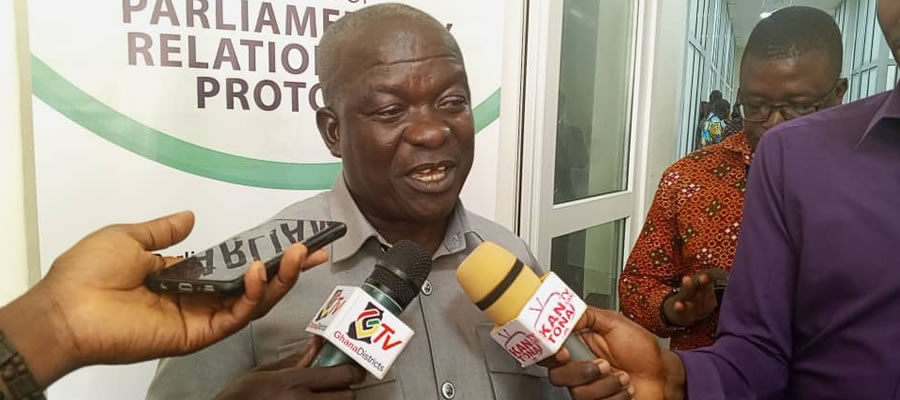

The physical features of the Asutifi South are made up of natural environment namely climate, vegetation, relief and drainage, location and size, the social and cultural environment in which the people live. The physical features are therefore essential elements or factors affecting the socio-economic development of the District.
Location and Size
The District is located in the western part of Ahafo Region. It shares boundaries with Asutifi North District to the north, Ahafo Ano North Municipal to the east, Asunafo North Municipal to the west, Atwima Mponua District to the south-east, and Asunafo South District to the south-west. The total land area of the district is about 597, 244 square kilometers. The District is located between latitudes 6°40' and 7°15' North and Longitudes 2°15' and 2°45' West.
Topography and Drainage
The topography is predominantly undulating with gentle slopes of less than one percent inclination. The land generally rises from 30m above sea level to over 61m in the South West, with some high elevations occurring around Sienchiem and Nkrankrom. The drainage pattern formed by the Tano River and its many tributaries can be described as dendritic. The Tano River provides the most reliable source of water for both domestic and agricultural purposes in the lean season for communities located along it in the District. Other river bodies found in the District include: River Konkontre, Subin, Goa and River Subri.
Climate and Vegetation
The District lies within the wet semi-equatorial zone marked by double rainfall maxima. There are major season (April to July) and minor season (September to November). The major rainy season is good for crop farming which is the major occupation in the District.
The District has a vegetation type dominated by semi-deciduous forest. Man’s activities notably farming, lumbering and occasional bush fires have however disturbed this vegetation. This has transformed some areas into a deprived wood savannah. Such transitional zones could be observed around Kensere and Dadiesoaba. These developments call for immediate measures to protect this sensitive ecological zone. There are however, large areas of forest reserves in the District which include Asukese Forest Reserve, Bia Tam Forest Reserve and Desiri Forest Reserve.
The District lies within the forest plateau with an average height of about 700 feet above sea level. The lowest part is about 650 feet above sea level found along the river basins while the highest point is found within the north-east reaching a height of 1,400 feet above sea level.
Geology and Minerals
The District is endowed with Birimian rock which has gold deposits. This has attracted a lot of small scale miners, given rise to both legal as well as illegal ‘galamsey’ mining activities in the District. The mineral deposits can mainly be found in areas around communities such as Hwidiem, Dadiesoaba, Nkaseim and Acherensua among others. There is also the presence of some major mining companies in the district. For instance Newmont Ghana Gold Limited has applied to undertake prospecting in areas such as Nkaseim and Acherensua. The Birimian rocks also have a high potential for Manganese and Bauxite which are yet to be tapped.
Soils in the District fall within the forest ochrosol group, which is generally fertile for the production of food and tree crops such as plantain, cassava, maize, cocoyam, cocoa, and cashew. The soil is also rich for vegetables such as cabbage, tomatoes, and garden eggs among others. There is also high production of ginger which can be used for alcoholic beverages. There are also extensive clay deposits in the District at Konkontreso which are being extracted and processed into brick for building and construction purposes.
Date Created : 12/5/2017 7:30:19 AM








 facebook
facebook
 twitter
twitter
 Youtube
Youtube
 +233 593 831 280
+233 593 831 280 0800 430 430
0800 430 430 GPS: GE-231-4383
GPS: GE-231-4383 info@ghanadistricts.com
info@ghanadistricts.com Box GP1044, Accra, Ghana
Box GP1044, Accra, Ghana